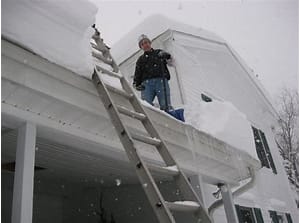Dehydration during extreme heat is a real threat, especially for people who work outdoors, exercise in hot environments, or live in areas experiencing heatwaves. I’ve personally dealt with heat exhaustion while trekking during summer and learned how quickly the body can lose water. Preventing dehydration isn’t just about drinking more water—it’s about adopting smart habits before, during, and after heat exposure. In this guide, I’ll walk you through a step-by-step approach to prevent dehydration in extreme heat, using a combination of personal experience and trusted health practices.
What Is Dehydration?
Dehydration occurs when your body loses more fluids than it takes in. In extreme heat, this happens faster due to excessive sweating. Without enough fluids, your body can’t cool down efficiently, which increases the risk of heat cramps, heat exhaustion, and heatstroke.
Symptoms of dehydration include:
- Dry mouth and dry skin
- Dizziness or lightheadedness
- Fatigue and muscle cramps
- Headache
- Dark yellow urine or infrequent urination
Preventing dehydration is about being proactive—not just reacting when symptoms appear.
Step-by-Step Guide to Prevent Dehydration in Extreme Heat
Step 1: Start Hydrating Early in the Day
Begin drinking water before you go outside or start any physical activity.
- Drink at least 500ml (17 oz) of water first thing in the morning.
- Don’t wait until you feel thirsty. By the time you feel thirsty, dehydration may already be starting.
When I had early-morning construction tasks, preloading water helped me avoid afternoon crashes caused by dehydration.
Step 2: Drink Water Consistently Throughout the Day
Rather than gulping large amounts at once, sip water regularly.
- Aim for 250–500ml (8–17 oz) every hour during periods of extreme heat.
- Use a reusable water bottle with measurements to track intake.
- Set alarms or reminders on your phone to drink water if you’re prone to forgetting.
This habit helped me stay consistent when I was doing fieldwork under the sun for long hours.
Step 3: Include Electrolytes
During intense sweating, your body loses electrolytes like sodium, potassium, and magnesium. These are essential for muscle function and hydration.
- Use oral rehydration solutions (ORS) or sports drinks in moderation.
- Include coconut water, lemon water with salt, or homemade electrolyte drinks if you want a natural option.
- Avoid drinks with high sugar or caffeine, as they may contribute to fluid loss.
I started adding electrolyte packets to my water after experiencing muscle cramps during summer hikes. It made a noticeable difference.
Step 4: Eat Hydrating Foods
Fluids aren’t the only way to hydrate—food contributes too.
- Eat water-rich fruits like watermelon, cucumber, oranges, grapes, and berries.
- Include salads, soups, and vegetables in your meals.
- Avoid salty snacks and fried foods, as they can increase dehydration.
I found that carrying sliced cucumber and fruit helped maintain hydration during long drives or outdoor shoots.
Step 5: Wear the Right Clothing
Clothing affects how your body regulates temperature.
- Wear light-colored, loose-fitting, breathable fabrics like cotton or linen.
- Avoid dark colors and synthetic materials that trap heat.
- Use a hat or scarf to protect your head and neck from direct sun exposure.
During one of my summer field trips, switching to light linen shirts reduced my sweating and made me feel less fatigued.
Step 6: Limit Physical Activity During Peak Heat
The sun is strongest between 12 p.m. and 4 p.m. Avoid heavy activity during these hours if possible.
- Schedule workouts or physical labor for early morning or evening.
- Take frequent breaks in the shade or indoors if you must work outside.
- Monitor your body—stop immediately if you feel dizzy or nauseated.
When I started moving my running schedule to 6 a.m., I noticed I didn’t lose as much water and recovered faster.
Step 7: Use Cooling Measures
Help your body cool down externally.
- Use a damp towel on your neck, wrists, or forehead.
- Splash cool water on your face or take cold showers.
- Stay in air-conditioned rooms or use a fan to improve air circulation.
In one instance, I cooled down faster by soaking a bandana in cold water and tying it around my neck while walking.
Step 8: Monitor Urine Color
Your urine is a direct indicator of your hydration status.
- Light yellow urine means you’re well hydrated.
- Dark yellow or amber indicates dehydration.
If your urine is very dark or you’re not urinating often, it’s a clear sign to increase fluid intake immediately.
I got into the habit of checking urine color throughout the day to stay ahead of dehydration.
Step 9: Avoid Alcohol and Excess Caffeine
Both alcohol and caffeine can act as diuretics, increasing fluid loss.
- Avoid alcoholic drinks during the day in hot weather.
- If you drink coffee or tea, balance it with extra water.
I personally limited coffee intake during heatwaves, replacing my second cup with coconut water to stay hydrated.
Step 10: Know Who Is Most at Risk
Certain groups are more vulnerable to dehydration:
- Elderly individuals
- Young children
- People with chronic illnesses
- Outdoor workers and athletes
If you’re caring for children or seniors, monitor their hydration more closely. During summer holidays, I made it a point to check my kids’ water bottles and encourage sips every hour.
Bonus Tip: Prepare an Emergency Hydration Kit
If you live in a hot climate or are traveling to one, prepare a small kit with:
- Bottled water or a hydration bladder
- Electrolyte tablets or packets
- Rehydration sachets
- Cooling wipes or towel
- Extra set of lightweight clothing
This was especially useful during a camping trip when water sources were limited and temperatures soared above 40°C.
Conclusion
Preventing dehydration in extreme heat takes planning, consistency, and awareness of your body’s needs. Start hydrating early, sip water regularly, eat water-rich foods, and use electrolytes when needed. Limit exposure to peak sun, wear proper clothing, and check your urine color as a simple hydration indicator. These habits helped me avoid heat-related illness multiple times and made summer conditions more manageable. Don’t wait for dehydration symptoms to appear—take steps proactively to keep yourself and your family safe.






